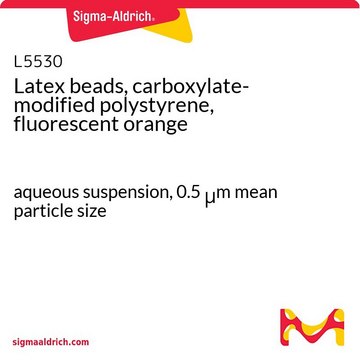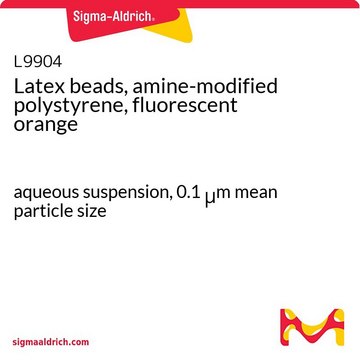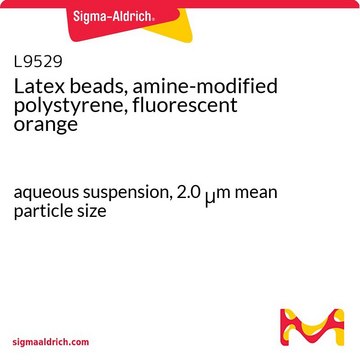L3030
Latex beads, carboxylate-modified polystyrene, fluorescent red
aqueous suspension, 2.0 μm mean particle size
Sinonimo/i:
Fluorescent latex beads
About This Item
Prodotti consigliati
Forma fisica
aqueous suspension
Livello qualitativo
contiene
0.1% NaN3
Composizione
Solids, 2.5%
tecniche
cell based assay: suitable
Dimens. media particelle
2.0 μm
Fluorescenza
λex ~575 nm; λem ~610 nm
applicazioni
cell analysis
Cerchi prodotti simili? Visita Guida al confronto tra prodotti
Applicazioni
Codice della classe di stoccaggio
10 - Combustible liquids
Classe di pericolosità dell'acqua (WGK)
WGK 2
Punto d’infiammabilità (°F)
Not applicable
Punto d’infiammabilità (°C)
Not applicable
Certificati d'analisi (COA)
Cerca il Certificati d'analisi (COA) digitando il numero di lotto/batch corrispondente. I numeri di lotto o di batch sono stampati sull'etichetta dei prodotti dopo la parola ‘Lotto’ o ‘Batch’.
Possiedi già questo prodotto?
I documenti relativi ai prodotti acquistati recentemente sono disponibili nell’Archivio dei documenti.
I clienti hanno visto anche
Il team dei nostri ricercatori vanta grande esperienza in tutte le aree della ricerca quali Life Science, scienza dei materiali, sintesi chimica, cromatografia, discipline analitiche, ecc..
Contatta l'Assistenza Tecnica.











